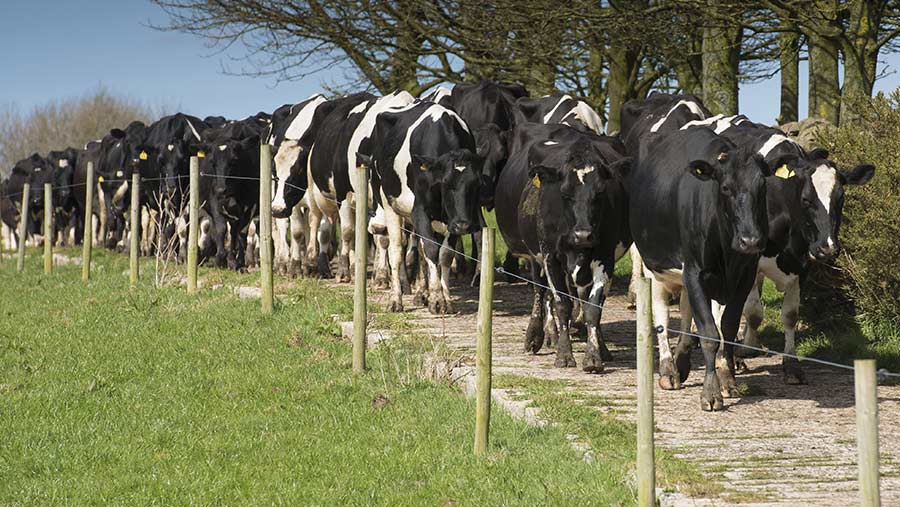How to tackle chronic dairy cow lameness and mobility
 © FLPA/Shutterstock
© FLPA/Shutterstock Lame cows have lower milk production, reduced feed intake, and are less likely to display estrus, all of which increase the risk of culling.
Therefore, it’s no wonder lameness is is considered one of the most important animal welfare problems in the dairy industry.
Below, vet Beth Reilly of Synergy Farm Health answers some key questions on dealing with lameness in your herd.
See also: 6 housing tips for better dairy production and welfare
What should you do with chronic lame cows?
When cows have a chronic lameness score of 3, significant irreversible changes will have occurred in the foot.
Cows are not eligible to travel if they are unable to bear weight on all four limbs. Severely lame, weight-bearing animals require extra precautions to travel to the abattoir.
Removing these animals from the farm will result in decreased stocking density, increased feed space and may subsequently result in an increased milk yield.
Once chronic score 3 cows are removed, more time can be spent on preventative work and addressing score 2 cows, helping to treat cases of lameness quickly and prevent the occurrence of chronic cases.

© Synergy Farm Health
- A: Normal healthy pedal bone (the bone that sits in the hoof capsule)
- B: The pedal bone starting to show signs of bony changes
- C: Significant bony changes have occurred on the pedal bone
How quickly should you look at a lame cow?
The Cattle Lameness Academy (CLA) recommends lifting the foot as soon as the lame leg is identified.
However, if it is not possible to examine the foot immediately, aim to address a score 3 within 24 hours (see table below).
If you are unable to get a foot-trimmer or vet out within these time periods and you are not a confident foot-trimmer, first-aid treatment with a block and pain relief should be administered.
How quickly should lame cows be examined? |
|
| Mobility score | Time to inspect lame leg |
| Score 1 | At next routine opportunity |
| Score 2 | Within 48 hours |
| Score 3 | Within 24 hours |
How should you treat claw horn lesions?
Early treatment is key for treating claw horn lesions. A therapeutic trim, application of a block where suitable, and pain relief (non-steroidal anti-inflammatory drug) are essential for improving cattle welfare and reducing the chances of chronic lameness occurring.
The CLA vet tech team routinely uses blocks on claws free of lesions, as part of their treatment protocol for therapeutic trims, to alleviate pressure on the affected claw.
See also: Claw horn lesions: what they are, the causes and treatment
How can you keep cows sound?
Early detection of newly lame cows is vital and fortnightly mobility scoring is recommended.
The benefits of an “external” scorer – even if that’s just someone on the farm that doesn’t spend the majority of their time with the cows – can be beneficial as they will provide an unbiased score.
It is also crucial to continue routine preventive foot inspection/trimming sessions for the cows. This is especially important for first lactation heifers, as these cows are your future.
Early identification of mild cases may show no visible lesion on the foot. This is because sole horn grows at a rate of 5mm per month, so lesions won’t be seen until a few months after the problem has occurred. Modelling and blocking cows if sole bruising is detected may help prevent sole ulcer formation.
How can you improve lameness identification?
Education and training will help teams identify lame cows via mobility scoring and provide a therapeutic foot-trim.
Undergoing training in foot care is highly recommended, and although face-to-face courses are temporarily suspended during lockdown, the CLA team has been producing Mobility Matters, a series of short educational videos on all aspects of lameness.
The videos can be found via the CLA website or the CLA Youtube Channel.
